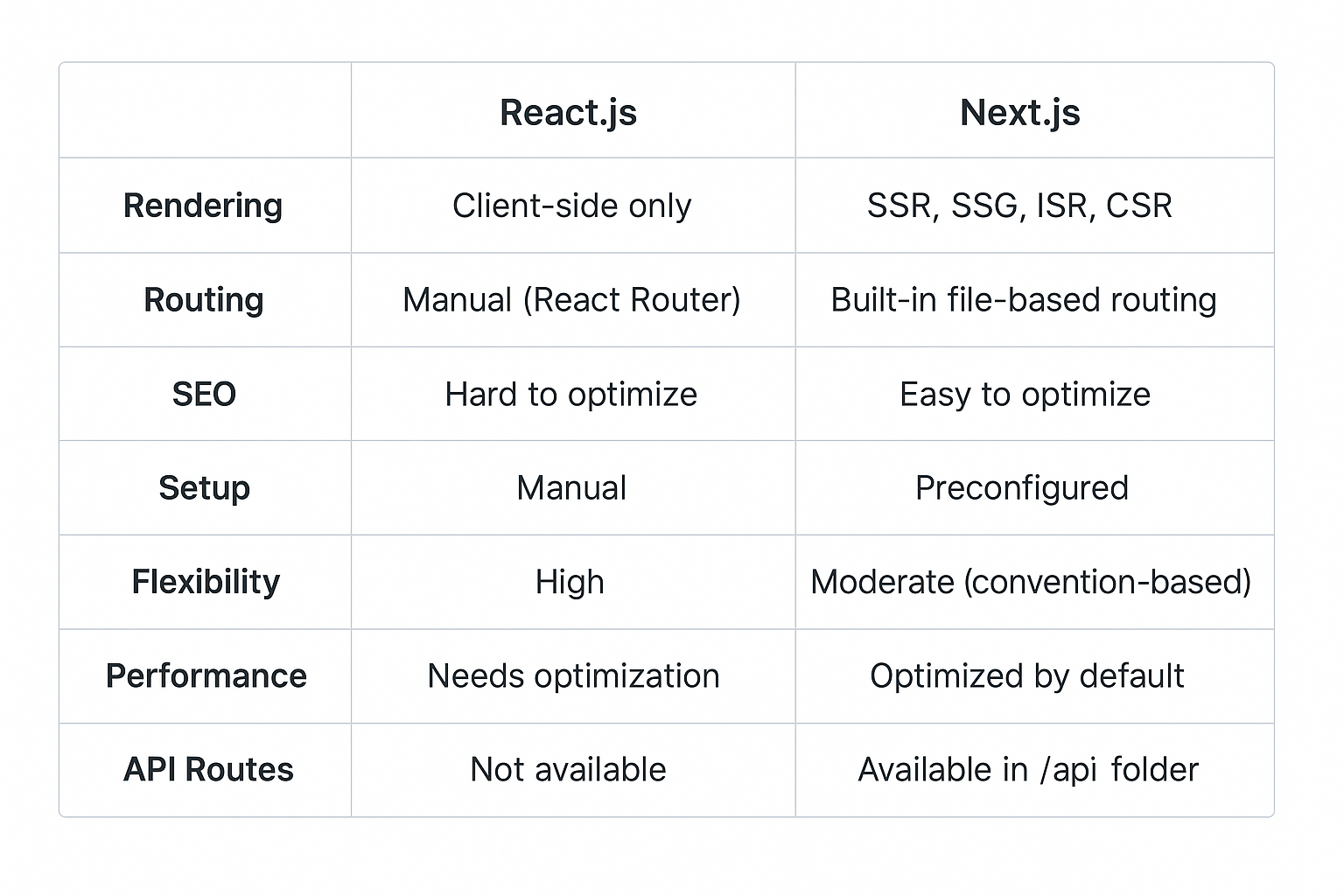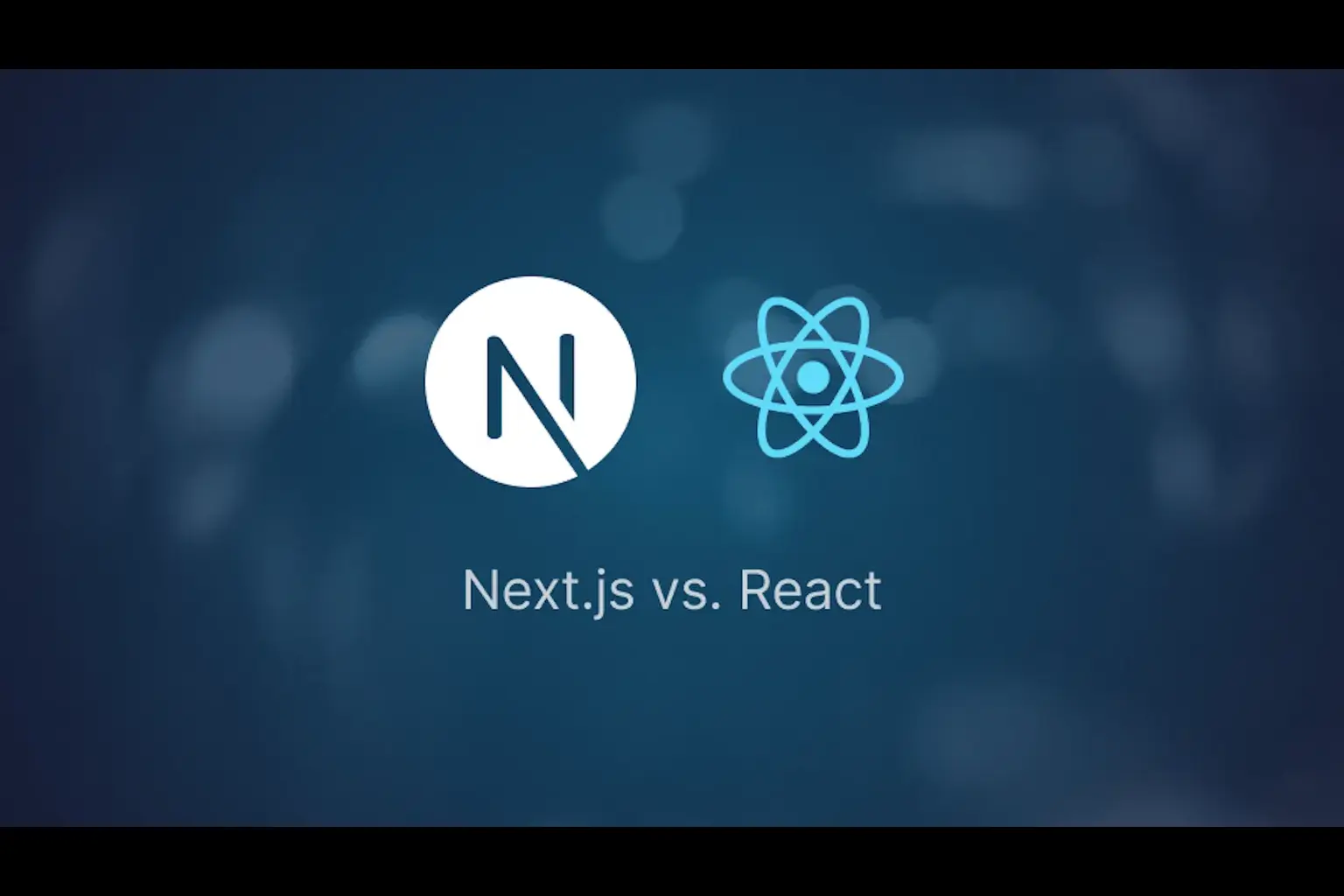In the world of modern web development, React.js and Next.js are two of the most popular frameworks. But if you’re new to the ecosystem or scaling your project, it’s essential to understand the difference between the two.
This guide will help you decide which is best suited for your needs.
What is React.js?
React.js is a JavaScript library developed by Facebook for building user interfaces. It's component-based, declarative, and allows you to build fast and interactive UIs.
- Just the UI layer: React helps in building interfaces but leaves routing, state management, and data fetching up to you.
- Client-side rendering by default: Good for SPAs (Single Page Applications).
- Highly flexible: You can use it with any backend, router, or setup.
Use React when you want full control over how your app is structured and are okay building the foundation yourself.
What is Next.js?
Next.js is a framework built on top of React that adds powerful features like server-side rendering and routing out of the box. It’s developed and maintained by Vercel.
- Built-in routing: No need to install a separate router.
- Server-side rendering (SSR) and static site generation (SSG) support.
- API routes: You can write backend logic within the same codebase.
- SEO-friendly: Because it supports SSR and SSG, content is crawlable.
- Optimized by default: Automatic code splitting, image optimization, and performance enhancements.
Use Next.js when you want scalability, SEO benefits, and developer productivity out of the box.
Head-to-Head Comparison

When to Choose React.js
- You’re building a SPA with minimal SEO requirements.
- You want maximum flexibility and don’t mind configuring things manually.
- You’re integrating React into an existing backend or frontend stack.
Conclusion
React.js is a powerful library for building UI components, but it doesn’t guide you on architecture. Next.js, on the other hand, is a full-fledged framework built on React that helps you get to production faster, especially for SEO-focused and scalable applications.
Use React for custom setups, use Next.js for speed and structure

